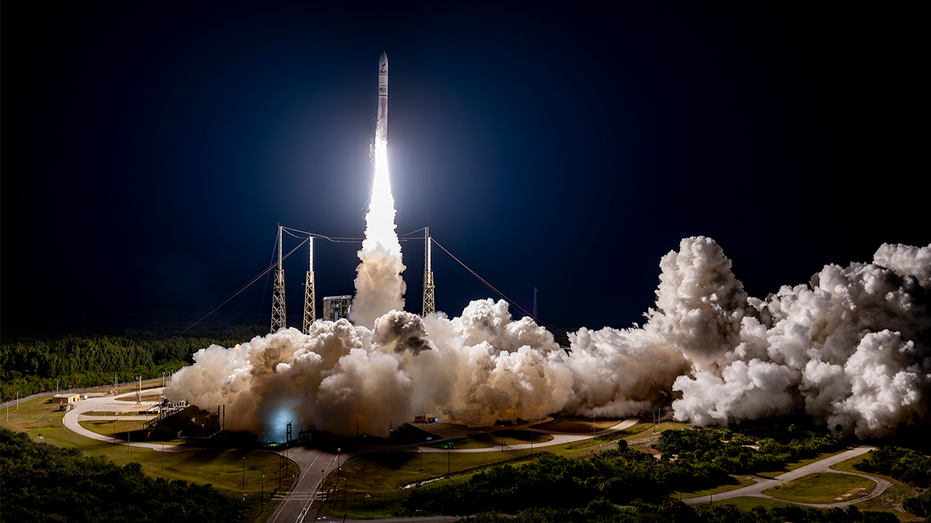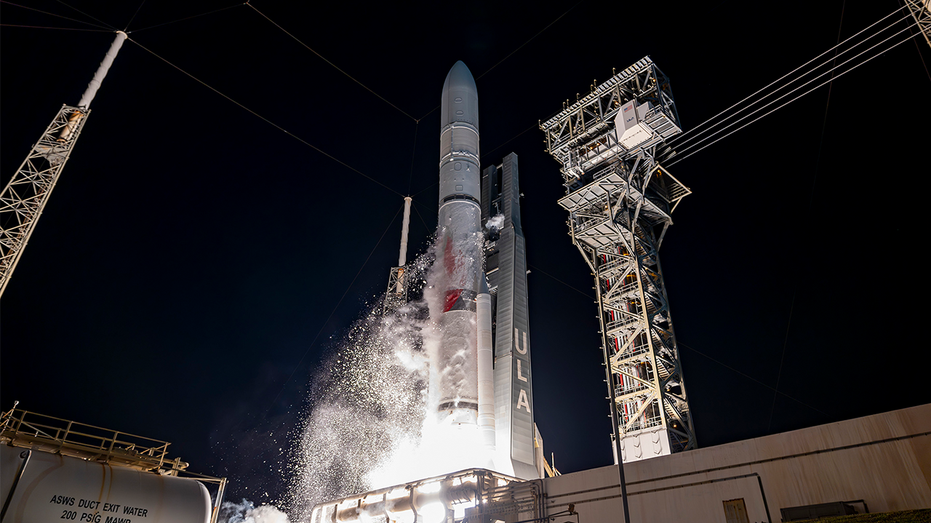US moon landing mission in jeopardy due to 'critical loss' of fuel
Astrobotic Technology lander launched on Vulcan rocket from Cape Canaveral Space Force Station
United Launch Alliance launches Vulcan rocket
United Launch Alliance successfully launched its next generation Vulcan rocket from Space Launch Complex-41 at Cape Canaveral Space Force Station. (via NASA)
A U.S. lunar lander that launched from Florida on Monday in hopes of becoming the first American craft to touch down on the moon in more than 50 years is now suffering from a "critical loss of propellant," putting its mission in jeopardy, its maker says.
Astrobotic Technology says its Peregrine Lunar Lander began the day lifting off on a United Launch Alliance Vulcan rocket from Cape Canaveral Space Force Station at 2:18 a.m. before separating approximately 310 miles above Earth about 50 minutes later.
"Astrobotic-built avionics systems, including the primary command and data handling unit, as well as the thermal, propulsion, and power controllers, all powered on and performed as expected," the Pittsburgh, Pennsylvania-based company said.
"Unfortunately, an anomaly then occurred, which prevented Astrobotic from achieving a stable sun-pointing orientation," according to the company. Astrobotic says the lander is designed to have an onboard solar panel facing the sun for "maximum power generation" while traveling in orbit.
US SEES SUCCESSFUL LAUNCH OF VULCAN ROCKET, PAVING THE WAY FOR FIRST MOON LANDING BY PRIVATE COMPANY

United Launch Alliance successfully launched its next generation Vulcan rocket, which was carrying the Peregrine Lunar Lander, early Monday morning. (United Launch Alliance)
Following a known communication blackout with the Peregrine Lunar Lander, Astrobotic said an improvised maneuver from its team "was successful in reorienting Peregrine’s solar array towards the Sun" and that "We are now charging the battery.
"The Mission Anomaly Board continues to evaluate the data we’re receiving and is assessing the status of what we believe to be the root of the anomaly: a failure within the propulsion system," Astrobotic continued. "Unfortunately, it appears the failure within the propulsion system is causing a critical loss of propellant. The team is working to try and stabilize this loss, but given the situation, we have prioritized maximizing the science and data we can capture. We are currently assessing what alternative mission profiles may be feasible at this time."
NASA has paid Astrobotic $108 million to carry five scientific instruments to the moon, according to Sky News.
"The NASA instruments aboard Peregrine will help NASA prepare for the Artemis program’s missions to enable a sustained human presence on the Moon," Astrobotic said in a statement.
The Peregrine lander is also carrying remains of several "Star Trek" cast members and DNA of President John F. Kennedy, Sky News reports.
HOW NASA IS OFFERING TO PUT YOU ON THE MOON IN JUST MONTHS

The rocket was launched at 2:18 a.m. on Monday from Space Launch Complex-41 at Cape Canaveral Space Force Station in Florida. (United Launch Alliance)
Prior to the announcement of the "anomaly," Astrobotic said the Peregrine craft would attempt a landing on the moon on Feb. 23.
"Peregrine could become the first commercial lander, and first American lander in over 50 years, to land on the moon," it said.
The last U.S. mission to the moon was Apollo 17 in 1972.

This illustration provided by Astrobotic Technology in 2024 depicts the Peregrine Lunar Lander on the surface of the moon. (Astrobotic Technology / AP Images)
CLICK HERE TO READ MORE ON FOX BUSINESS
Astrobotic also said Monday that the launch was the "maiden flight" of the Vulcan rocket, developed by the Lockheed-Boeing joint venture United Launch Alliance.





















